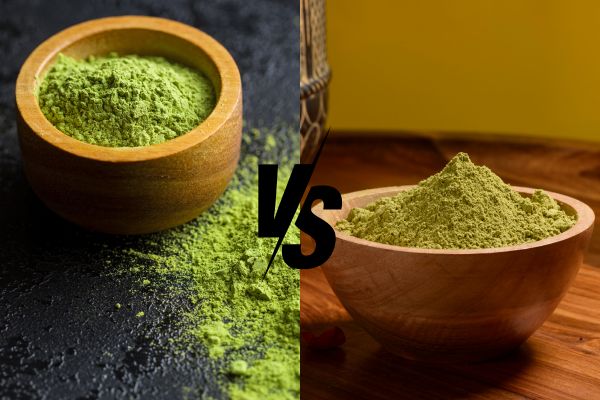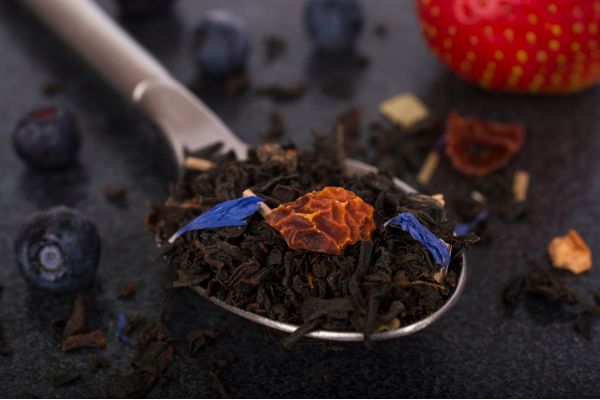Discover how modern technology enhances traditional matcha powder production. Learn how it boosts efficiency while preserving rich flavor, vibrant color, and quality in every step from cultivating to grinding.
Contents
Introduction
The production of matcha, a finely ground powder of specially grown and processed green tea leaves, has long been rooted in traditional methods that emphasize quality and craft. However, as global demand for matcha has surged, matcha manufacturers have applied modern technology to optimize and scale up the process without compromising on its original flavor, texture, and nutritional value. This article explores how advancements in technology – such as automated machine lines and high-speed milling – have transformed the traditional matcha powder production process. These improvements have enhanced the production capacities and consistency while preserving as many of matcha’s unique properties as possible.
1. An overview of the traditional matcha powder production process
While Japanese matcha is celebrated around the world, it originates from the Tang Dynasty in China. At that time, tea leaves were harvested, steamed, and compressed into bricks for easy transportation and trade. These tea bricks are prepared by breaking off, pulverizing, and mixing with hot water. In the 12th century, tea seeds were brought to Japan by a Japanese Buddhist Monk and planted in the Kyoto region. It was here that Uji emerged as the ideal land for tea cultivation, becoming the birthplace of exquisite Japanese matcha.
The historical method of traditional matcha powder production represents a sophisticated process refined over centuries in Japan. Each step, from cultivation to grinding, requires skill, patience, and an understanding of tea cultivation, showing the dedication of artisans to producing high-quality matcha. However, this method is both time-consuming and requires a lot of effort, which is difficult to replicate in large-scale production. This is when modern technology is researched and applied, improving efficiency without affecting the quality that traditional methods bring.

Explore benefits of matcha powder:
2. Advanced processing techniques for faster, consistent production
The integration of modern technology into matcha production has brought outstanding economical efficiency, helping to reduce time and labor, while achieving unprecedented precision and productivity. By utilizing advanced technological tools and control systems, each step of the matcha production process is monitored to ensure consistent quality and uniformity in every batch of products.
Advanced shading and harvesting technique
The traditional method of using straw mats to shade the tea plants can only block over 70% of sunlight. In contrast, the innovative use of black cheesecloth can now block as much as 90% of light. In addition, modern equipment is also used to accurately measure light levels, time, and shade density, and assist workers in adjusting shading to maintain uniformity between other tea growing areas. This shading method can effectively force the tea plants to produce more chlorophyll and amino acids, increasing the vibrant green color and rich, umami flavor of matcha.
Besides, harvesting was done by hand to pick only the newest, most tender leaves in some regions. Nowadays, tea harvesters are also widely used instead of manual harvesting in the traditional method. This application helps increase productivity and reduce harvesting time in large-scale tea farms.

Optimizing time with modern steaming technology
In the traditional method, steaming is done manually and often in small batches. After harvesting and washing, tea leaves are transferred to steaming vessels, usually wooden vats. Here, they will be steamed at high temperatures for a short time, typically around 15-30 seconds. Experienced artisans need to control time and temperature while ensuring that the tea is steamed evenly.
Modern steaming methods use autoclaves with precise temperature control, which are designed for large quantities of tea leaves. The steaming chamber has sensors and automated systems to control temperature, time, and steam flow. This ensures all tea leaves are steamed sufficiently to prevent oxidation while preserving their natural color and flavor.
Efficient cooling and drying methods
This is the most time-consuming step in traditional methods. The steamed tea leaves were carefully spread on bamboo mats and dried slowly. Over three days, they are carefully dried in an oven, meticulously monitored, and adjusted by skilled artisans. It ensures that the temperature is precisely regulated, effectively reducing moisture to the optimal level without compromising the tea’s vibrant color and rich flavor.
In the modern matcha production line, the steamed leaves will be cooled in special cooling equipment, which uses strong wind to reduce the humidity and separate them to avoid sticking to each other. After that, the leaves go through convection drying systems. These machines circulate warm air evenly across the leaves, ensuring uniform drying without overheating and changing the original color and aroma. This application of advanced machinery has largely shortened the drying time of tea leaves compared to traditional methods.

Improved de-stemming and cutting
After the leaves are dried, skilled artisans carefully remove the stems and veins from each leaf by hand. This step is to achieve the smoothest texture and best flavor when ground. Then the leaves are often hand-cut into smaller pieces for easy grinding, called tencha. Such manual work takes a lot of time and effort and also requires meticulousness and carefulness of the worker. Therefore, it can only be produced in small batches, making it difficult to produce large quantities efficiently.
Advanced separating and sorting machines have now simplified this step, using automated technology to speed up production while maintaining the high quality of the tencha. The stem separator uses a color sensor system to identify stems and leaf blades, then discharges the stem and keeps the blades. This process is carried out repeatedly until all stems and leaf veins have been thoroughly removed. The leaf blade is then passed through a cutting machine to cut into uniform tencha pieces, ensuring consistency and quality in every batch.
3. The shift from stone grinding to high-speed milling equipment
The grinding process is perhaps the most iconic part of traditional matcha production. For centuries, the dried tencha have been ground into a superfine powder using granite stone mills, known as ishiusu in Japan. The mill consists of two circular stones that fit tightly together. When grinding, artisans will insert tencha into the hole in the top stone and slowly rotate it to gradually grind it into a fine powder. The stones turn at a slow, consistent pace, usually producing around 30 grams of matcha powder per hour. This slow speed helps maintain cool temperatures to prevent heat from affecting the matcha’s color and aroma. However, it is challenging to scale for large-quantity production.
Today, modern equipment used in many large-capacity matcha factories is ball milling. Its productivity is significantly higher than that of stone crushing, capable of processing 5-10 kg per hour. This machine uses stainless steel balls as grinding material in the rotating chamber or drum. When the Tencha is placed into this chamber, it begins to rotate at a speed of up to 500 rpm. The steel balls collide with the leaves at high speed and quickly crush the leaves into smooth powder. Despite operating at such a high speed, this machine still ensures the original flavor of matcha thanks to the control system that maintains the temperature below 25°C.

Which method is better?
Both methods are commonly employed in the production of matcha powder, each with its own unique characteristics. When using stone grinding, the texture of matcha will be very smooth and creamy. In contrast, while a ball mill machine is suitable for larger-scale production, matcha powder produced tends to lack the traditional creaminess. As a result, the traditional method is the preferred choice for matcha ceremonial grade which commands a premium price and is reserved for special occasions. Culinary matcha is produced by modern methods for more affordable prices and larger quantities.
Discover matcha powder produced using modern technology:
Conclusion
Advanced technology has modernized the traditional matcha production process, helping to achieve consistent quality and increased yields while retaining the unique properties that make matcha so prized. Based on traditional methods combined with innovations in every step of production, manufacturers can now offer matcha on a larger scale without losing its delicate flavor, vibrant color, or health benefits. This combination of tradition and technology helps meet the great demand for matcha powder and preserves the inherent essence of matcha for many generations.
About Future Generation Co., Ltd
Future Generation Company Limited is one of the largest tea and beverage suppliers in Vietnam, with 28 years of experience in production and export. FGC is equipped with modern technology from Japan to produce matcha powder, ensuring high-capacity production and uniformity between production batches. Thanks to using automatic systems in production along with high-speed grinding machines, we are able to supply large quantities of matcha to the market, meeting consumer needs.
FGC strives to achieve our mission to become Vietnam’s leading healthy beverage company. Our factories also meet international standards such as ISO, HACCP, etc. In addition, we constantly innovate our machinery system, strengthen production capacity, and increase productivity. If you have any questions about matcha powder, feel free to contact us here:
Contact
Address: R4 building, Office Quarter 02, Royal City, 72A Nguyen Trai St., Thanh Xuan Dist., Hanoi.
Phone: +84 24 73 000 125/ +84 24 73 063 369
Mail: info@vietnam-tea.com
Website: https://oem-fgc.com/
Facebook: https://www.facebook.com/fgcvietnamtea
LinkedIn: https://www.linkedin.com/company/fgcvietnamtea/
Source:
https://www.o-cha.net/english/conference2/pdf/2010/files/PROC/pr-s-06.pdf
https://www.hetkleinstehuis.nl/en/blog/post/traditional-vs-modern-matcha-drying-methods










